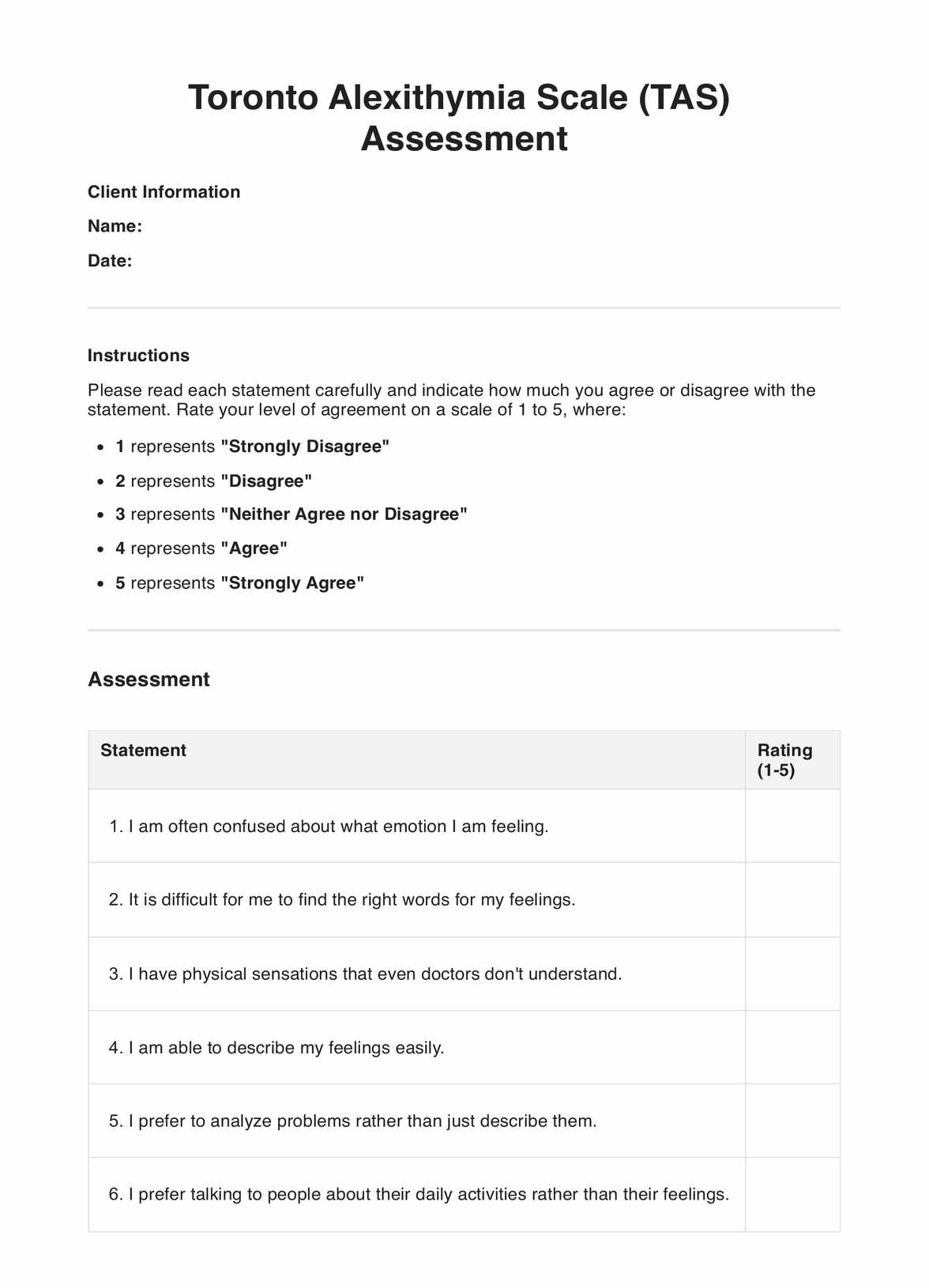The Toronto Alexithymia Scale (TAS) is used by psychologists, psychiatrists, therapists, researchers, medical professionals, and educators. It helps in assessing a person's ability to identify and describe emotions.

Toronto Alexithymia Scale
Use the Toronto Alexithymia Scale (TAS) to measure alexithymia and assess difficulties in recognizing and describing emotions in clinical and research settings.
Toronto Alexithymia Scale Template
Commonly asked questions
The Toronto Alexithymia Scale (TAS) is used when assessing an individual's ability to identify and describe emotions, often in diagnosing mental health conditions, conducting psychological research, or evaluating emotional processing in medical and educational settings.
The Toronto Alexithymia Scale (TAS) is a self-report questionnaire with 20 items rated on a 5-point Likert scale. It assesses difficulty identifying feelings, describing feelings to others, and externally oriented thinking. Higher scores indicate a greater degree of alexithymia. Clinicians and researchers use it to understand emotional awareness and processing.
EHR and practice management software
Get started for free
*No credit card required
Free
$0/usd
Unlimited clients
Telehealth
1GB of storage
Client portal text
Automated billing and online payments











